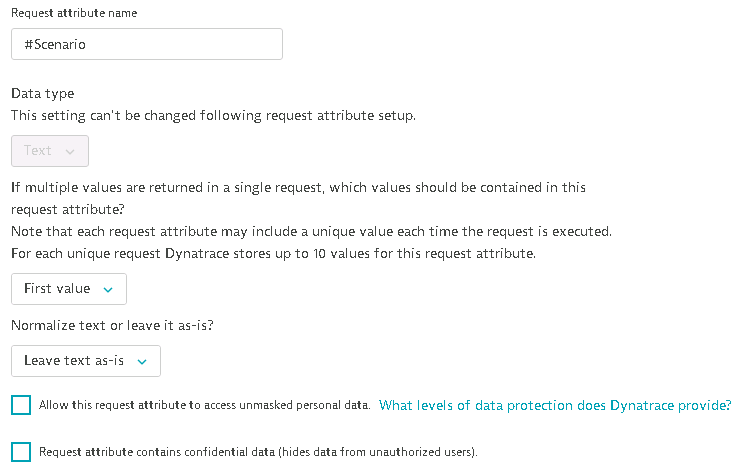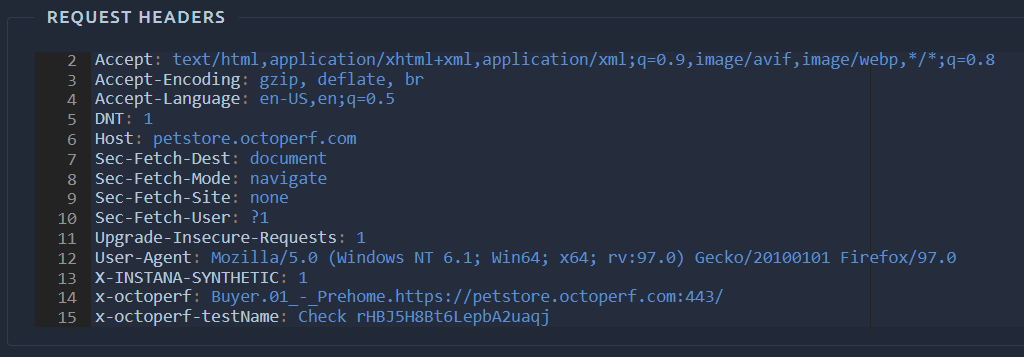Application Performance Management¶
These integrations are shared with the entire project: you don't need to configure them for each scenario.
Configuration¶

Activate an HTTP Header integration¶
The following procedure explains how to activate an integration:
- Oepn the Application Performance Management panel,
- Click on the checkbox of the integration you want to activate,
- Close the configuration panel.
OctoPerf currently supports the following APM solutions:
- Dynatrace
- App Dynamics,
- And Instana.
Note
The additionnal header added by OctoPerf needs to be interpreted on the APM's side, usually by activating the RUM (Real User Monitoring) functionnality.
AppDynamics Header¶
When the APM integration is activated from the runtime screen, script validations will also include the header:

In this case the header sent is AppD_Header: Buyer.Login_process.01_-_Home_page.Home
As you can see it is composed of:
- The virtual user name,
- The name of each parent element in their order of appearance,
- The name of the request or its path if name is empty.
Dynatrace Header¶
When the APM integration is activated from the runtime screen, script validations will also include the header:

The value in this situation is: VU=lizette_walker-Buyer-1;SI=OctoPerf;TSN=01+-+Prehome;LSN=Buyer;LTN=Check bbXCU3EBE0n4YfPTqrI-;PC=My-request-name
VUis the unique Id of the current virtual user, made ofagent name-virtual user name-numberSIis the name of the load testing tool,OctoPerfin our case,TSNis the name of parent transaction (if any found),LSNis the name of the virtual user,LTNis the name of the scenario being run,PCis the name of the http request or its path.
In Dynatrace you can configure these metadatas with requests attributes like this:

For example this is how you can get the virtual user name stored inside the LSN key:



Instana Header¶

When the APM integration is activated from the runtime screen, script validations will also include the header.
The following HTTP headers are included within each http request:
x-octoperf-testName: name of the scenario being executed.x-octoperf: this header contains the current request path. It contains the virtual user name, the name of each parent element in their order of appearance and name of the request (or its path if name is empty).
In order to configure Instana to properly catch these headers, you might have to load the following in the configuration yaml file of instana at startup:
com.instana.tracing:
extra-http-headers:
- 'x-loadtest-id'